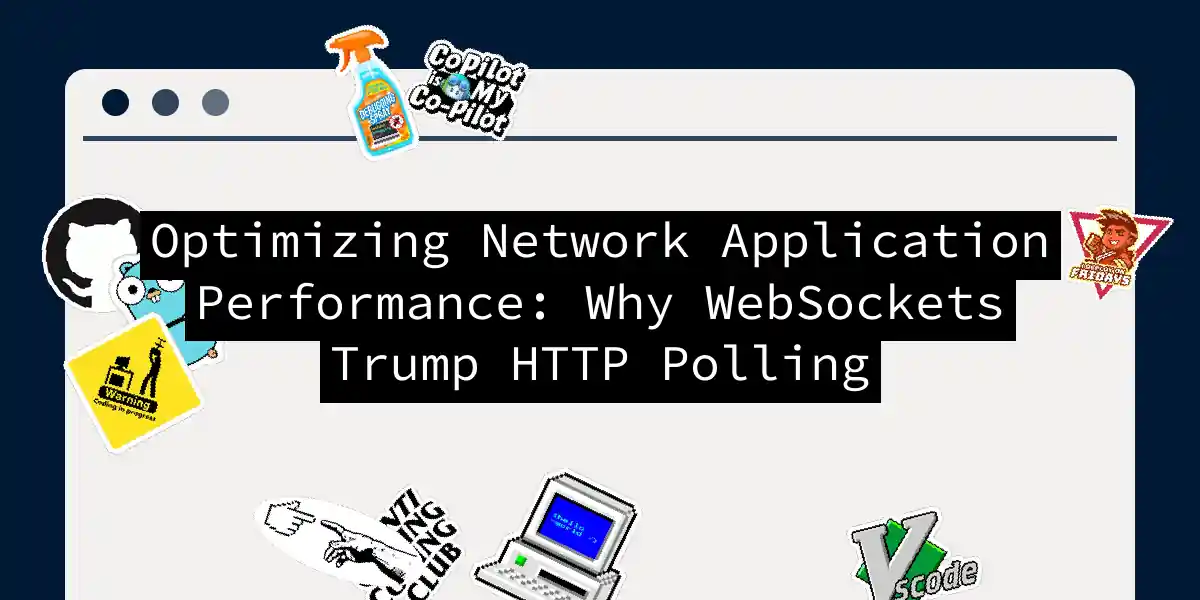The Quest for Real-Time Magic
In the world of web development, the pursuit of real-time communication is akin to the Holy Grail – everyone wants it, but achieving it can be a daunting task. Traditional HTTP polling methods have been around for a while, but they come with their own set of drawbacks. Enter WebSockets, the knight in shining armor that promises to revolutionize how we handle real-time data. In this article, we’ll delve into the world of WebSockets and why they are the superior choice over HTTP polling for optimizing network application performance.
The Polling Conundrum
HTTP polling, particularly long polling, has been a staple for achieving near-real-time updates. Here’s how it works:
How Long Polling Works
- The client sends an HTTP request to the server.
- The server holds the request open until new data is available or a timeout is reached.
- Once data is available, the server responds to the client’s request.
- The client processes the data and immediately sends another request to the server.
This cycle repeats, ensuring the client receives updates as soon as they are available. However, this method has several pitfalls.
The Downsides of Long Polling
- Resource Intensive: Long polling is more resource-intensive on the server because it involves holding connections open for extended periods. This can lead to increased server load and higher latency, especially with high-frequency updates[1][2][5].
- Latency Overhead: The process of establishing, holding, and closing connections introduces latency. Gateways and firewalls can also interfere, causing connections to close prematurely[1][2][3].
- Message Ordering Issues: With multiple HTTP requests in flight simultaneously, there is no guarantee of reliable message ordering. This can lead to duplicate data being written to local stores like
localStorageorIndexedDb[1].
The WebSocket Revolution
WebSockets offer a more elegant and efficient solution for real-time communication. Here’s why:
How WebSockets Work
- The client initiates a WebSocket handshake with the server.
- Once the handshake is complete, a persistent, full-duplex connection is established.
- Both the client and server can send and receive messages independently without the need for repeated HTTP requests.
The Advantages of WebSockets
- Efficient Resource Utilization: WebSockets maintain a single, persistent connection, reducing the overhead of establishing new connections for each update. This results in lower resource utilization on both the client and server sides[2][3][5].
- Low Latency: WebSockets provide real-time, bidirectional communication with minimal latency. This makes them ideal for applications requiring instant updates, such as live streaming, online gaming, and financial trading platforms[2][3][5].
- Full-Duplex Communication: Unlike long polling, which is essentially half-duplex, WebSockets allow both the client and server to send and receive messages simultaneously. This enhances the overall user experience by enabling seamless, real-time interactions[1][2][4].
Practical Use Cases for WebSockets
- High-Volume Chat Applications: WebSockets are perfect for chat applications that require active, real-time user interactions. They ensure that messages are delivered instantly, enhancing the user experience.
- Live Streaming: For applications that involve live streaming, WebSockets provide the necessary low latency and efficient data transfer to ensure a smooth viewing experience.
- Interactive Games: In multiplayer gaming, WebSockets are crucial for real-time communication between clients and the server, ensuring that game states are updated instantly.
Implementing WebSockets: A Step-by-Step Guide
Setting Up the WebSocket Connection
To get started with WebSockets, you need to establish a connection between the client and the server. Here’s a simple example using JavaScript:
// Client-side code
const socket = new WebSocket('ws://example.com/ws');
socket.onmessage = (event) => {
console.log(`Received message: ${event.data}`);
};
socket.onopen = () => {
socket.send('Hello, server!');
};
socket.onclose = () => {
console.log('Connection closed');
};
socket.onerror = (error) => {
console.log('Error occurred');
};
Server-Side Implementation
On the server side, you can use a library like ws in Node.js to handle WebSocket connections:
// Server-side code using ws library
const WebSocket = require('ws');
const wss = new WebSocket.Server({ port: 8080 });
wss.on('connection', (ws) => {
ws.on('message', (message) => {
console.log(`Received message: ${message}`);
ws.send(`Hello, client`);
});
ws.on('close', () => {
console.log('Connection closed');
});
ws.on('error', (error) => {
console.log('Error occurred');
});
});
Scaling with WebSockets
One of the significant advantages of WebSockets is their ability to scale efficiently. Since WebSockets maintain a single connection per client, they reduce the overhead associated with repeated HTTP requests.
Handling Multiple Clients
When dealing with a large number of clients, WebSockets ensure that each client has a persistent connection. This makes it easier to manage and scale the application.
In contrast, long polling would require multiple HTTP requests, leading to increased server load and complexity in managing connections.
Conclusion
When it comes to optimizing network application performance for real-time communication, WebSockets are the clear winner. They offer a more efficient, scalable, and low-latency solution compared to traditional HTTP polling methods. By understanding the strengths and limitations of both technologies, developers can make informed decisions to enhance the performance and user experience of their applications.
So, the next time you’re building a real-time application, remember: WebSockets are not just a tool, they’re the magic that makes your application come alive.
